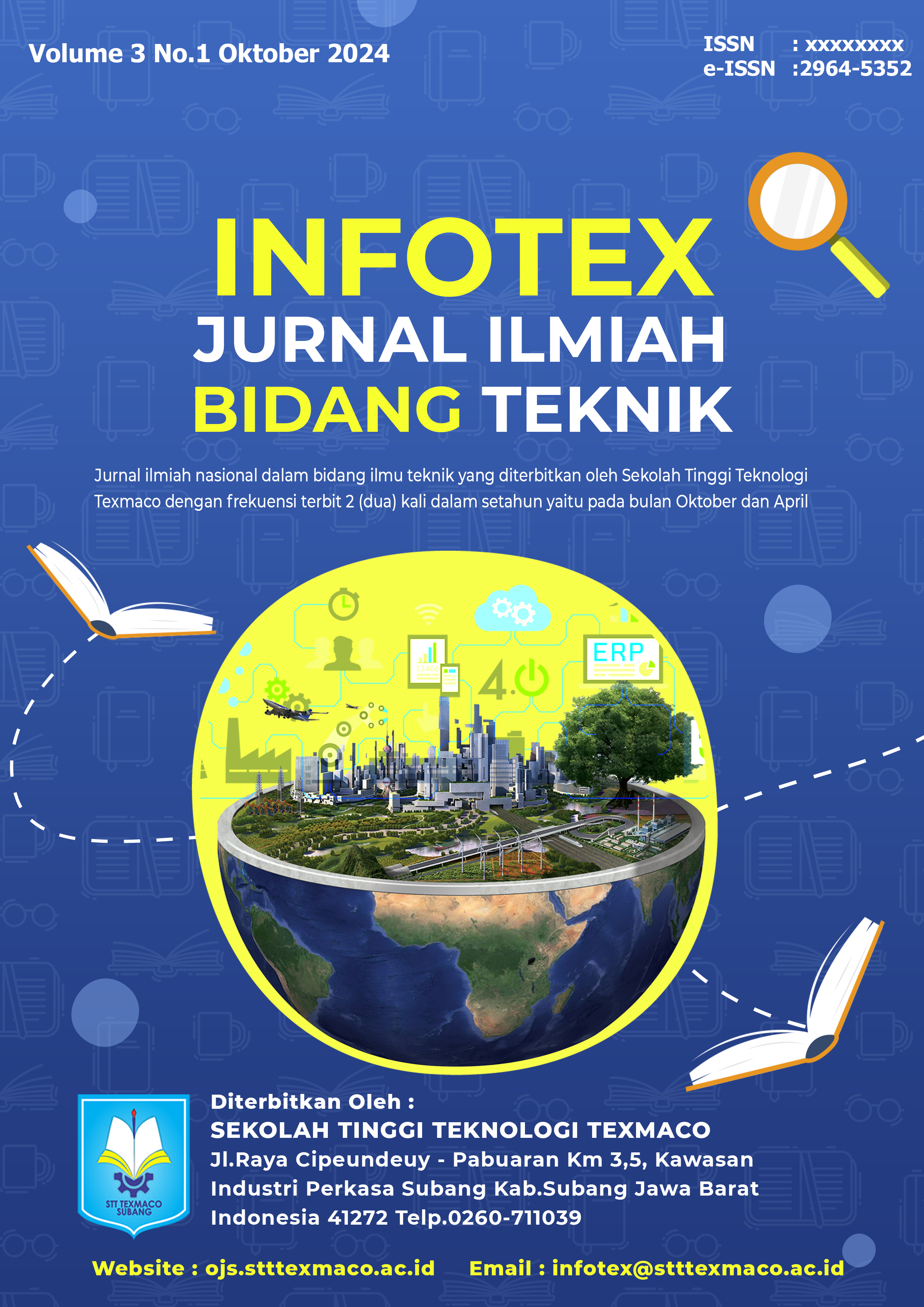Perbaikan Waktu Baku dengan Menggunakan Westinghouse di Teaching Factory Sekolah Tinggi Teknologi Texmaco Subang
Keywords:
waktu baku, stopwach, westinghouseAbstract
Piranti Teknik Indonesia produced the wiring but experienced time inefficiency because it had not yet had optimum raw time. The study USES the stopwatch methods of Frederick Winslow Taylor and frank and Lillian gilbreth to measure work time, and the Westinghouse methods to evaluate worker performance. The results showed the raw time before the repair was 832 seconds, and after the repair to 773 seconds, cut the time by 59 seconds. The optimal raw time for one de-harnessed was 773 seconds with 11 workers in the divisions. The fastest assembly process is tapping 6 (41.541 seconds) and the longest is tapping 10 (47.854 seconds). Improvements reduce raw time by 5%, increase production efficiency.
References
[1] G. U. Widagdo, “Jurnal PASTI Volume XII No. 1, 119 - 136 ANALISIS PERHITUNGAN WAKTU BAKU DENGAN MENGGUNAKAN METODE JAM HENTI PADA PRODUK PULLEY DI CV. PUTRA MANDIRI JAKARTA,” vol. XII, no. 1, pp. 119–136.
[2] T. Rully and N. T. Rahmawati, “Perencanaan Pengukuran Kerja Dalam Menentukan Waktu Standar Dengan Metode Time Study Guna Meningkatkan Produktivitas Kerja Pada Divisi Pompa Minyak Pt Bukaka Teknik Utama Tbk.,” JIMFE (Jurnal Ilm. Manaj. Fak. Ekon., vol. 1, no. 1, pp. 12–18, 2015, doi: 10.34203/jimfe.v1i1.442.
[3] S. Prayuda, “Analisis Pengukuran Kerja Dalam Menentukan Waktu Baku Untuk Meningkatkan Produktivitas Kerja Pada Produksi Kerudung Menggunakan Metode Time Study Pada Ukm Lisna Collection Di Tasikmalaya,” J. Mhs. Ind. Galuh, vol. 1, no. 1, pp. 120–126, 2020.
[4] A. S. Prameswari and R. H. Yustrianthe, “Analisis Faktor – Faktor Yang Memengaruhi Audit Delay (Studi Empiris Pada Perusahaan Manufaktur Yang Terdaftar Di Bursa Efek Indonesia),” J. Akunt., vol. 19, no. 1, p. 50, 2017, doi: 10.24912/ja.v19i1.113.
[5] I. Idris and S. N. Pohan, “Penentuan Waktu Standar Bagian Produksi Pada Cv. Sanggar Putra Kalingga Medan,” J. Teknovasi, vol. 01, no. 1, pp. 14–18, 2014.
[6] S. Makhmudah, R. A. Pratama, H. Kurnia, N. F. Zakaria, and A. N. S, “Perancangan Sistem Kerja di Berbagai Industri Manufaktur,” J. Tek. Ind., vol. 3, no. 2, pp. 83–92, 2022.
[7] I. D. Kurniati et al., Buku Ajar. 2015.
[8] K. A. Putranti, S. Herodian, and D. M. F. Syuaib, “Studi Waktu (Time Study) pada Aktivitas Pemanenan Kelapa Sawit di Perkebunan Sari Lembah Subur, Riau,” J. Keteknikan Pertan., vol. 26, no. 2, pp. 99–106, 2012.
[9] R. Afiani and D. Pujotomo, “Penentuan Waktu Baku Dengan Metode Stopwatch Time Study Studi Kasus Cv . Mans Group,” J. Tek. Ind., vol. 6, no. 1, pp. 1–30, 2015.
[10] E. Meila Sari and M. M. Darmawan, “Pengukuran Waktu Baku Dan Analisis Beban Kerja Pada Proses Filling Dan Packing Produk Lulur Mandi Di Pt. Gloria Origita Cosmetics,” J. ASIIMETRIK J. Ilm. Rekayasa Inov., vol. 2, no. 1, pp. 51–61, 2020, doi: 10.35814/asiimetrik.v2i1.1253.
[11] M. Rahayu and S. Juhara, “Pengukuran Waktu Baku Perakitan Pena Dengan Menggunakan Waktu Jam Henti Saat Praktikum Analisa Perancangan Kerja,” Unistek, vol. 7, no. 2, pp. 93–97, 2020, doi: 10.33592/unistek.v7i2.650.
[12] N. Yudisha, “Perhitungan waktu baku menggunakan metode Jam Henti pada proses Bottling,” J. Vor., vol. 2, no. 2, pp. 85–90, 2021, doi: 10.54123/vorteks.v2i2.73.
[13] E. Krisnaningsih, S. Dwiyatno, and R. Sasongko, “Usulan Penentuan Waktu Baku Pada Operator Packing Folding Kain Tetoron Rayon Dengan Metode Stopwatch,” J. Intent J. Ind. dan Teknol. Terpadu, vol. 3, no. 2, pp. 67–81, 2020, doi: 10.47080/intent.v3i2.952.
[14] Y. D. Regent M, “Usulan Penentuan Waktu Baku Proses Racking Produk Amplimesh Dengan Metode Jam Henti Pada Departemen Powder Coating,” J. Tek., vol. 7, no. 2, 2019, doi: 10.31000/jt.v7i2.1357.
[15] W. Primercurrent, T. Travo, M. F. Ismail, S. Rahayuningsih, and A. Komari, “Penentuan Waktu Standard dan Jumlah Tenaga Kerja Optimal,” vol. 2, no. 1, pp. 1–10, 2020.
Downloads
Published
Issue
Section
License
Copyright (c) 2024 R.M Sugengriadi, Santo Wibowo, Siti Masitoh

This work is licensed under a Creative Commons Attribution-ShareAlike 4.0 International License.


